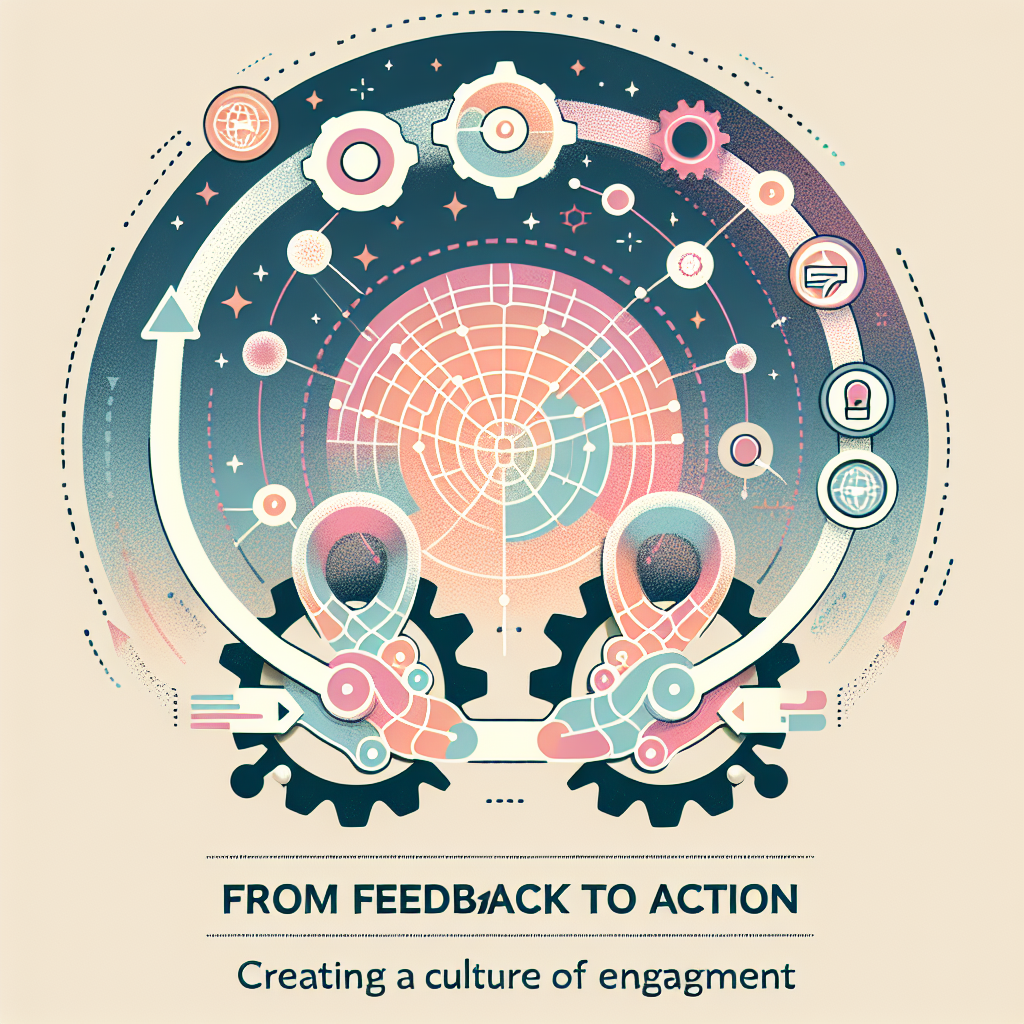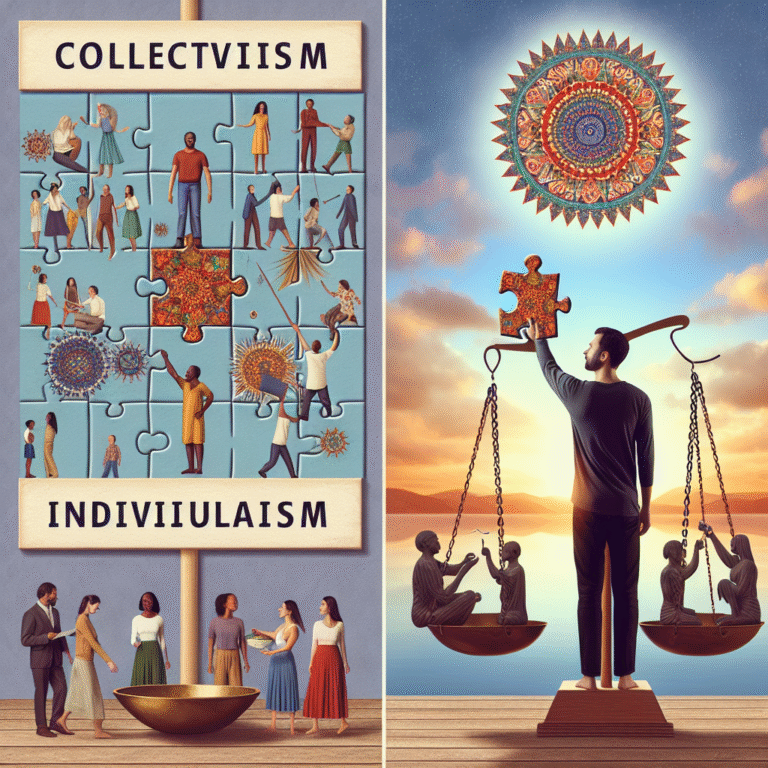
In an era where organizations continuously strive for excellence, the concept of engagement has transcended beyond mere buzzwords. It’s a vital ingredient that drives innovation, performance, and employee satisfaction. If you aspire for your organization to thrive, understanding how to transform feedback into actionable change is imperative. From Feedback to Action: Creating a Culture of Engagement isn’t just a strategy; it’s a movement that redefines the workplace and a pivotal component in fostering a motivating and empowering environment.
Introduction: The Power of Engagement
Imagine a workplace where every employee feels valued, their opinions matter, and feedback is not just collected but genuinely acted upon. This isn’t a utopia; it’s an achievable reality through a robust culture of engagement. In today’s fast-paced business environment, organizations cannot afford to overlook the importance of two-way communication and active feedback loops. When employees are engaged, productivity soars, retention rates improve, and innovation becomes the norm.
This article will explore how companies can take meaningful steps from feedback to action, ultimately creating a culture of engagement that fuels success.
Understanding Engagement: Beyond the Basics
What Is Engagement?
Engagement in the workplace embodies the emotional commitment employees have toward their organization. It goes beyond job satisfaction and is the result of feeling comfortable enough to contribute insights and feedback, knowing that those insights will lead to change.
Why Engagement Matters
Organizations with high levels of employee engagement experience:
Higher Productivity: Engaged employees are motivated and put in extra effort.
Reduced Turnover: Employees who feel heard are less likely to leave.
- Innovation: A culture that encourages feedback can lead to groundbreaking ideas.
The Feedback Loop
Within the realm of engagement, feedback plays a crucial role. Organizations must prioritize gathering data from employees and, more importantly, translating that data into action. The feedback loop consists of three main components:
Collecting Feedback: Surveys, one-on-ones, and exit interviews can provide insights into employee sentiment.
Analyzing Feedback: Understanding trends and areas of improvement from collected data is crucial.
- Acting on Feedback: Implementing changes can solve problems and demonstrate that input is valued.
Creating a Culture of Engagement
Step 1: Establish Clear Channels for Feedback
Organizational leaders should create and maintain various feedback channels, ranging from formal surveys to informal coffee chats. Here are practical methods to integrate a feedback culture:
Regular Surveys: Utilize tools like Gallup or SurveyMonkey for pulse surveys.
Suggestion Boxes: Physical or digital suggestion boxes can invite ongoing feedback.
- Open-Door Policies: Encourage a culture where employees feel safe discussing concerns with leadership.
Step 2: Train Leaders in Feedback Skills
Management must be equipped not just to collect feedback but to handle it effectively. Training programs should focus on:
- Active Listening: Ensure leaders invite discussion and reflect back understanding.
- Constructive Response: Leaders should recognize feedback and take actionable steps moving forward.
Case Study: Google
Google is often cited as a leader in engagement strategies. Their employee feedback system, “Googlegeist,” invites feedback on various aspects of the work environment. Analysis of this feedback leads to actionable changes, resulting in a workplace culture that has consistently rated high in employee engagement.
Step 3: Analyze and Prioritize Feedback
Feedback should not only be collected but thoroughly analyzed. Here are steps to do this:
Identify Patterns: Use analytics tools to find common concerns.
- Prioritize Issues: Determine which feedback warrants immediate action versus long-term strategies.
Case Study: Microsoft
Microsoft has implemented a comprehensive feedback system known as “One Microsoft.” By analyzing employee feedback, they identified issues around work-life balance. Consequently, they made substantial changes, such as flexible working hours, leading to increased employee satisfaction and productivity.
Step 4: Communicate Actions Taken
Communication is vital post-feedback collection. Employees need to know their opinions lead to tangible changes. Here’s how to effectively communicate actions taken:
Regular Updates: Keep employees informed about changes and improvements through newsletters or team meetings.
- Highlight Success Stories: Share stories of how feedback has led to changes, reinforcing the value of their input.
Step 5: Foster Continuous Improvement
A culture of engagement is not static; it requires an ongoing commitment to refine processes. Continuous improvement involves:
Regular Check-Ins: Schedule quarterly reviews to assess the effectiveness of actions taken.
- Adaptation of Policies: Flexibility in policies can drive a more inclusive feedback environment.
Measuring Engagement: Tools and Techniques
Organizations must have the right metrics in place to gauge engagement levels effectively.
Key Metrics to Measure
- Engagement Scores: Regularly assess engagement levels through surveys.
- Retention Rates: Monitor turnover rates as a sign of engagement levels.
- Productivity Metrics: Understand how feedback leads to an increase in output.
Table 1: Sample Engagement Metrics
| Metric | Description | Frequency |
|---|---|---|
| Engagement Surveys | Surveys to assess engagement | Quarterly |
| Turnover Rates | Percentage of employees leaving | Annual |
| Productivity Levels | Output per employee | Monthly |
Overcoming Common Challenges
Challenge 1: Lack of Participation
Many organizations experience a lack of participation in feedback initiatives. Combat this by:
Creating a Safe Space: Employees are more likely to share thoughts if they feel safe from repercussions.
- Anonymity Options: Ensure employees can share their views without signing their names.
Challenge 2: Insufficient Follow-Up
Frequently, organizations collect feedback but fail to act on it, leading to disengagement. To mitigate this:
Set Clear Timelines: Establish a timeline for when feedback will be addressed.
- Utilize Feedback Champions: Designate specific individuals to oversee action implementation.
Challenge 3: Resistance to Change
Inertia often accompanies feedback initiatives. Organizations can encourage change by:
Highlighting Benefits: Use evidence to show how changes will improve work conditions.
- Involving Employees in Solutions: Encourage a collaborative approach to implementing changes based on feedback.
Conclusion: Your Call to Action
From Feedback to Action: Creating a Culture of Engagement is not merely an organizational strategy; it’s an evolving journey. By implementing robust feedback systems, organizations create environments where employees feel valued and engaged.
Start today by assessing your current feedback mechanisms. Are they effective? Are you engaging with your employees in meaningful ways? Take the steps outlined in this article to cultivate a dynamic culture that encourages dialogue and drives sustainable success.
FAQs on From Feedback to Action: Creating a Culture of Engagement
1. How can I encourage more feedback from employees?
Consider creating a safe and anonymous environment for employees to voice their thoughts. Use multiple channels for feedback, ensuring diversity in how employees can engage.
2. What if management is resistant to change after feedback is given?
Communicate the positive effects of changes and involve employees in brainstorming solutions. Present data, case studies, or success stories from other organizations as evidence of potential benefits.
3. How do I measure the ROI of engagement initiatives?
To measure ROI, track engagement scores over time against productivity and turnover rates. Conduct surveys before and after changes to assess improvements directly related to engagement strategies.
4. Can small companies implement feedback systems effectively?
Absolutely! Feedback systems are scalable and can be tailored to suit any organization size. Small companies can utilize simplified methods, such as regular team meetings and simple surveys.
5. What if employees responses are overwhelmingly negative?
Negative feedback is an opportunity for growth. Approach it with openness, seek to understand underlying issues, and act systematically to address the concerns.
By fostering a culture where engagement is prioritized and feedback evolves into actionable insights, organizations position themselves for long-term success in a competitive landscape. From Feedback to Action: Creating a Culture of Engagement is not just a philosophy; it’s the roadmap toward effectiveness and innovation.















